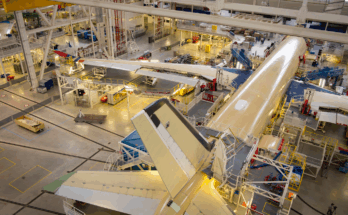By Richard Pettibone, Aerospace & Defense Companies Analyst, Forecast International.
It has been a long and difficult road, but Finmeccanica is finally getting its house in order. CEO Mauro Moretti, who took the helm in early 2014, has wasted no time in examining the conglomerate’s issues and quickly acting to correct course.
Despite being the fourth CEO to lead the firm in four years, Moretti has successfully conducted a deep assessment of Finmeccanica. The result, as with many industrial consolidations of late, is that Finmeccanica has chosen to focus on its core operations in the aerospace, defense, and security industries. Over the next five years, operations that do not fit this paradigm will be divested, merged, or closed. This trimming of the portfolio should help the firm increase its focus and better deploy limited resources to support continued growth in an anemic home market.
Up first will be the divestment of its long-troubled rail operations. In early 2015, the company reached an agreement to sell AnsaldoBreda and its 40 percent interest in Ansaldo STS to Hitachi for EUR1.9 billion. Proceeds from this transaction will be used to lower the company debt to an estimated EUR3.4 billion. With the rail operations out of its portfolio, the company will be able to better focus its resources on its new core sectors.
Leading the company’s aerospace operations is helicopter manufacturer AgustaWestland. Having been recently cleared by Italian courts of any wrongdoing in an Indian helicopter procurement, the firm can now count its successes. On top of this is the delivery of its newest helicopter, the AW189, which is currently the only new-generation super-medium rotorcraft in service. This was followed by the military variant of the AW189, the AW149, which was certified in mid-2014. The takeaway from this program is AgustaWestland’s success in making the program easily adaptable to both civil and military markets – a key factor as defense budgets tighten and development funds evaporate.
In fixed-wing aircraft markets, rationalization is underway. Alenia Aermacchi’s trainers continue to enjoy success, with long-term production of the M-346 forecast to be stable over the next 10 years. The company has partnered with General Dynamics on a potential bid for the U.S. Air Force’s T-X jet trainer program, which will be very lucrative to the eventual winner.
More troublesome is Alenia’s partnership with Sukhoi on the Superjet 100. According to reports, there have been no significant returns on investment for Finmeccanica on the project thus far. Exacerbating the situation no doubt is the political issue of Russia’s aggression in Ukraine. Finmeccanica may push for the joint venture to tighten its governance and get more in line with Western standards.
In its defense markets, Selex ES will also see some consolidation as the company looks to trim product lines. For example, three of the firm’s companies are invested in unmanned air vehicle (UAV) technologies: AgustaWestland, Alenia Aermacchi, and Selex ES. Because Selex is an electronics systems producer, putting UAVs under the Selex ES brand would make sense, as it can supply the whole system –from ground control to craft.
The most drastic restructuring action will be undertaken at the company’s U.S. subsidiary DRS Technologies. The firm was acquired for $5.2 billion in 2008, shortly before the financial crisis struck. Since the acquisition, the value of the deal has plummeted, with DRS’s sales reported at $1.4 billion for 2014 in Finmeccanica’s annual report.
In the past we’ve speculated that DRS may be sold wholesale, but now it appears that pieces will be divested in the near term. In March 2015, Finmeccanica began hunting for buyers for some of the assets of DRS. The company is currently shopping DRS’s aviation & logistics and tactical communications & networks units, which could fetch around $200 million. Despite this, North America remains a focal point for Finmeccanica via DRS. As such, a wholesale divestiture seems unlikely, as DRS leads the firm’s penetration into the world’s largest defense market. In fact, DRS has been conducting the same review as its parent, pruning its portfolio to focus on core capabilities. In the long run, management is betting that further globalization of U.S. military goods and services will occur, and DRS will be there to capture its share.
The actions undertaken so far make it clear that this is a new Finmeccanica. With past scandals in the rear view and a clear roadmap for what lies ahead, Finmeccanica should be entering a period of stability.
A military history enthusiast, Richard began at Forecast International as editor of the World Weapons Weekly newsletter. As the Internet grew in importance as a research tool, he helped design the company's Forecast Intelligence Center and currently coordinates the EMarket Alert newsletters for clients. Richard also manages social media efforts, including two new blogs: Defense & Security Monitor, covering defense systems and international issues, and Flight Plan, which focuses on commercial aviation and space systems. For over 30 years, Richard has authored the Defense & Aerospace Companies, Volume I (North America) and Volume II (International) services. The two books provide detailed data on major aerospace and defense contractors. He also edits the International Contractors service, a database that tracks all the contractors involved in the programs covered in the FI library. More recently he was appointed Manager, Information Services Group (ISG), a new unit that encompasses developing outbound content for both Forecast International and Military Periscope.



